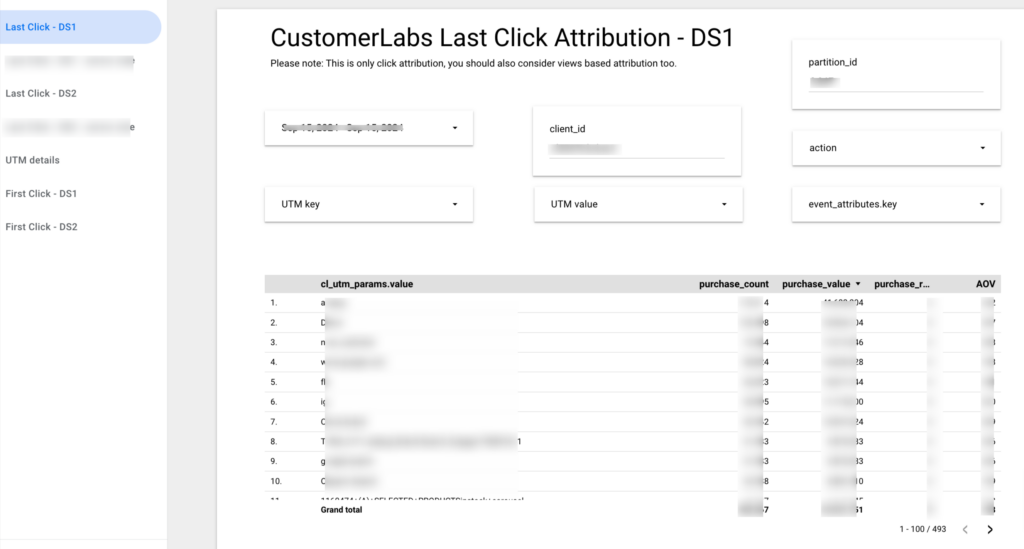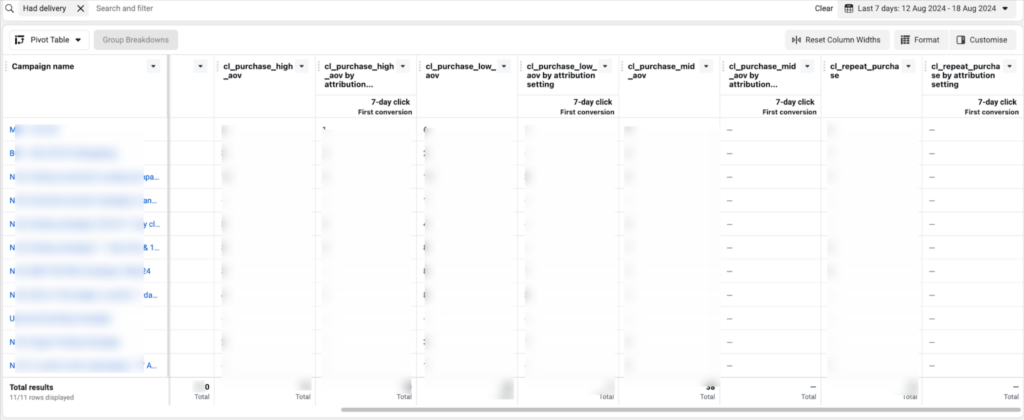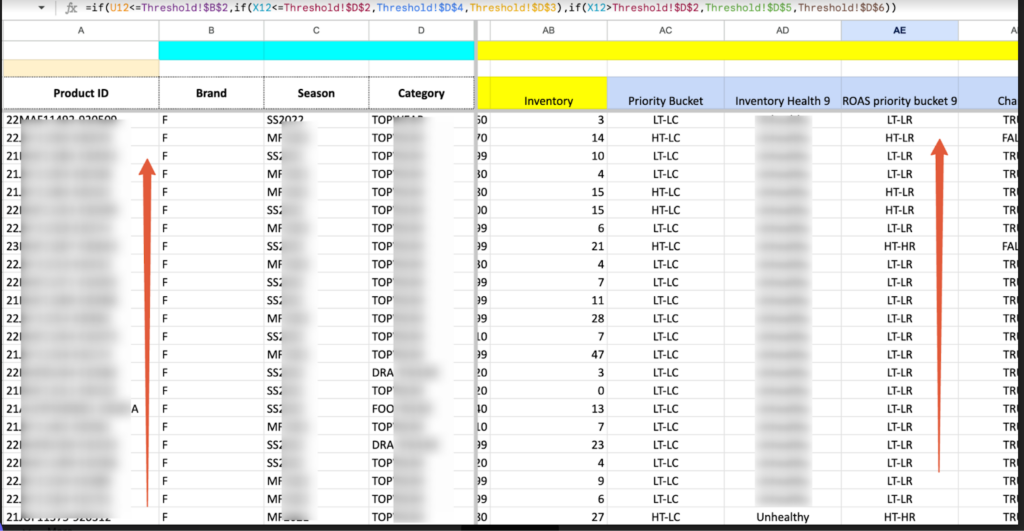Back in 2021, we were just acquaintances—now, we’re way past that! I still remember our first chat, bonding over the iOS 14+ update and the infamous Conversions API (CAPI). Who knew those techy talks would be the start of something so…data-driven? 😂
Since then, we’ve been through it all—crazy sales spikes, discount frenzies, and pulling off every 1PD OPs strategy imaginable. We even tackled the Google Tag Manager to Shopify migration like pros—no pixels harmed, no campaigns performance lost, just buttery-smooth transitions.
Cookies stayed intact and retargeting performance stayed intact.
And the best part? We’ve seen the business grow by multiples of Xs.
Life of W for Woman with 1PD OPs – How does the day look like?
Day starts with attribution reports – no blue whale green whale fancies
Most of our key decisions come from analyzing the attribution report, which helps us determine where to invest more and where to cut back. It’s all about figuring out what’s working and what’s not.
This report breaks down first-click and last-click attribution across all UTMs—source, medium, ad, campaign, and more—for purchases made over the past day, week, and month. These insights are crucial for guiding our strategy and maximizing effectiveness.

This report makes for all the meetings. This is a customizable bigquery looker studio report.
Building multiple funnels for tracking user journey
For every season, we roll out a variety of customizations on the website—whether it’s adding pop-ups, banners, or CTAs—to enhance the visual user experience.
Deciding on these tweaks is the easy part, but how do we track and measure whether they’re actually making an impact?
For the recent huge sales, we tracked the impressions of the entire banner across the site, via Google Tag Manager easily by custom code.

Zero limitations – Profit driven strategies to train the AI Algorithm for more high order value purchasers
AOV based conversions to train the algorithm for the more high value orders
Fortunately, like other brands and marketers, W for Woman wasn’t confined or restricted in how they utilized their data. While the common approach is to optimize campaigns solely for the “purchase event,” this often limits flexibility and strategy, especially when relying on Shopify CAPI or similar providers.
However, we took it a step further. Instead of just optimizing for purchases, we focused on high AOV purchasers, training the algorithm to attract more of these valuable customers. This strategy allowed us to maximize the effectiveness of our campaigns and drive higher-value orders.

New customer purchase and repeat customer purchase to track and analyze
Optimizing the campaigns for purchase is good but measuring the campaigns is equally important.
When we say, how should we measure? Is it the number of purchases, cost per acquisition or ROAS(Return on ads spend) as asusual? How do we go one step deeper to measure which campaign or audience or creative is driving high value customers, new customers , repeat customers etc.
We created custom conversion events to measure and analysis helps to optimize the campaigns better on which campaign is driving more new customers or repeat customers etc.


Tracking Profits, Optimizing, and Targeting Users Based on Their Discount Preferences
It goes without saying that the non-discount buyers always make the profit margin bigger and ROAS shines.
Therefore, to optimize for non-discount purchases, we can train the Meta ad algorithm by creating custom conversion events that focus on these specific buying behaviors on non-discount buyers.
And also by segmenting users who have added discounted or non-discounted products to their cart, we can retarget them across various channels, including ads, emails, and WhatsApp.
This approach allows us to drive more high-value, non-discount purchases.

Building sooper high intent audience who are likely to convert
The custom audiences that we create for the retargeting campaigns are all high-intent users who are likely to convert. And there are multiple scenarios and use-cases we create. Some are;
1. When huge sales season hits – All product viewed more than 2 – 3 times
When we know this is the clearance sale or so, we target the users beyond 300days but viewed the product more than 3 times or added to the cart more than once.
2. High ROAS High Traffic audience:
We also conducted an analysis where we pulled all their style IDs and created a report categorizing each one into segments like high traffic with high ROAS, high traffic with low ROAS, low traffic with low ROAS, and low traffic with high ROAS.
This analysis helped us identify that the sweet spots for retargeting were the high traffic with high ROAS and low traffic with high ROAS segments, allowing us to pivot our strategy accordingly.

And we created the audience based on these style ids who have been added to cart and product viewed but not purchased in the last 6 months.
Hero product omnichannel targeting:
Whenever the hero product gets added to the cart, the retargeting campaigns on Meta and Google, and also Whatsapp campaigns will be triggered.
You know, after all, it is the hero product.
We’ve created audience segments based on the product category and have activated them across ad platforms for omnichannel targeting and we also make sure those are likely to convert by adding filter conditions if they viewed the product more than 2 times or so.
Few kickass results of 1PD OPs on Meta Ads
First-Party Data Server cookies improve the ROAS
As we have enabled 1P domain tracking, we have browser cookies saved in the server forever i.e. all fbclid and gclid are collected and stored forever. Also there will always be more purchases reported to this pixel without any breakage.
At any given time, server ROAS will be higher as it has more reporting helping in attribution.

Higher matchrate custom audience converts at low CPP @ high ROAS
Engaged audience is completely powered by 1PD OPs for which CPP is at the lowest with higher ROAS.
These are the audience who viewed the product more 2-3times but not purchased in the last 5-6 months.
This is nothing but pure incrementality.

How does Meta convert 25% purchases from retargeting audiences? Is it magic? Only logic!
No debate that Meta deprecates the user behavior data of inactive users beyond 28 days.
Enabling/Adopting to First-Party Data Ops helped creating a custom audience beyond 180 days at individual product level.
A quick snapshot of what First-Party Data Sync and Default Facebook Pixel sync custom audience match rate was a game-changer.
Facebook pixel audience had only 25% or less than it but First-Party Data Sync matched beyond 80% of the total audience size.

Ahhhh …. Again this is pure incremental revenue!!
Is there a wrap? Summary ?
First-Party Data Operations (1PD Ops) are the future—mastering these fundamentals is key to thriving in a privacy-centric world where ad platforms face increasing limitations. This piece highlights how 1PD Ops transformed W for Woman’s marketing strategy, driving incremental revenue through strategic, data-driven decisions. By leveraging 1PD Ops, the brand improved attribution, trained algorithms for high AOV purchasers, and created highly targeted custom audiences. This approach not only enhances campaign performance, ROAS, and customer retention but also prepares brands to excel in the evolving landscape of modern marketing.


